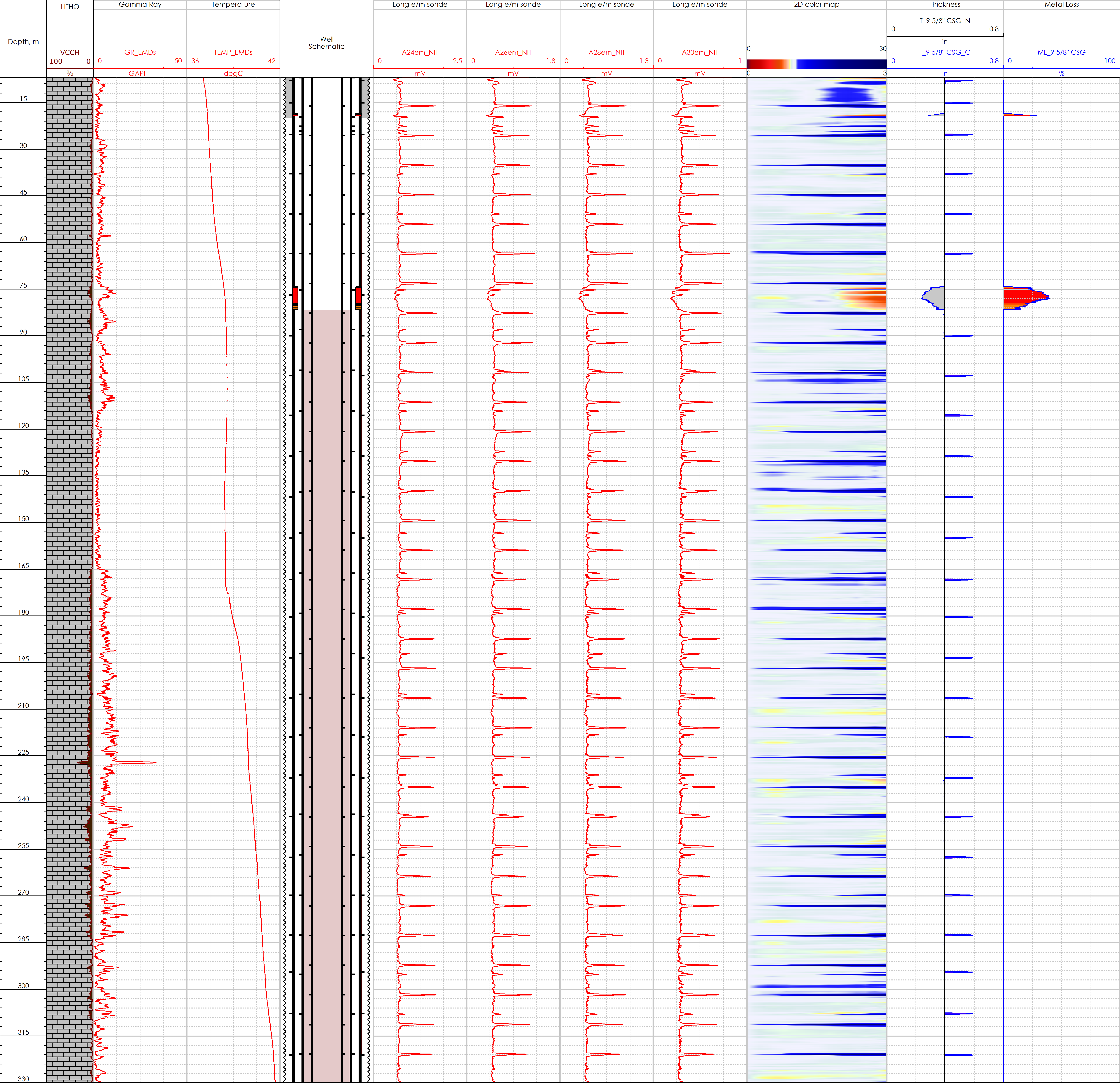Integrity Challenge
It is important to have a good cement bond in the annulus, for example by using a multistage packer and having adequate centralization. External coating on the outer pipe will lessen the risk of corrosion on the outer pipe which will also minimize corrosion migration from the outer pipe to the inner pipe. This is especially key if the outer pipe has poor cement quality or no cement and is exposed to a corrosive aquifer. Multiple barrier failure can lead to catastrophic consequences such as oil leak to surface which could result in harm to personnel, the environment, the asset and company reputation.
Corrosion Logging Result
One example of sub optimal external coating on the outer casing is shown below:
The well is a vertical bean pump (BP) oil producer drilled in 2009. The well was completed with a 9 5/8” surface casing and a 7” production liner. The 9 5/8” casing has external coating from 24-322 m. A 4.5” BP completion string was run.
In 2017 the well was worked over. The completion string was pulled and a retrievable bridge plug (RBP) set at 805 m. The 9 5/8” casing was pressure tested and failed. A 7” scab liner was installed from surface to the top of the 7” production liner. A BP completion string was run and the well put on production.
In 2022 EMDs corrosion logging was conducted as part of an integrity monitoring program.
Corrosion logging data indicated that the 9 5/8” surface casing had two intervals of severe corrosion. The first interval is a very narrow interval at 19 m, this is 5 m above the externally coated casing. The shape of the recorded curves indicated the possibly of a through wall defect at this depth. The second interval from 74-82 m is located across an externally coated area. It is known that that 1 m from both ends of the pipe the connections are not coated. This is to allow space for the pipe slips and make-up tongs to clamp directly on to the pipe during connection make up. These areas are effectively weak points in the corrosion protection. The data showed that corrosion initiated at the casing collar with a maximum metal loss of 40%. In all probability, these two intervals are the main cause of the failed casing pressure test.
Conclusion
Coating pipe is effective at minimizing corrosion on the pipe body. However, the uncoated areas and couplings are still vulnerable to corrosion. It is therefore recommended that corrosion monitoring is carried out on a regular basis.
All case studies
Looking for more information?
Get in touch with us and our representative will get back to you
Contact Us



